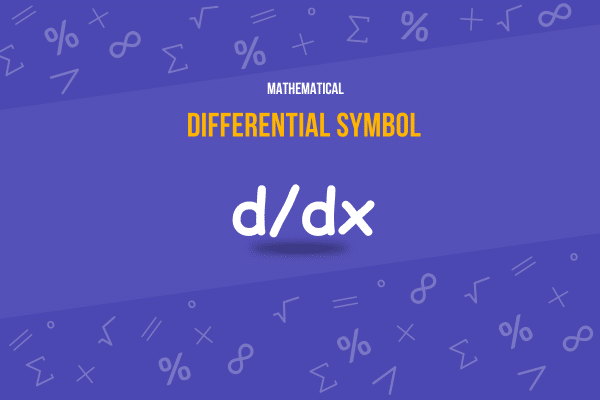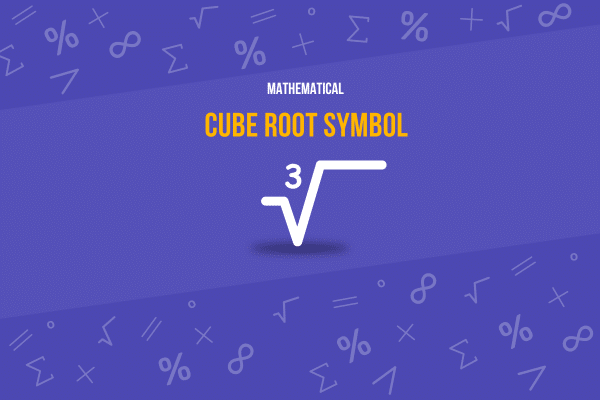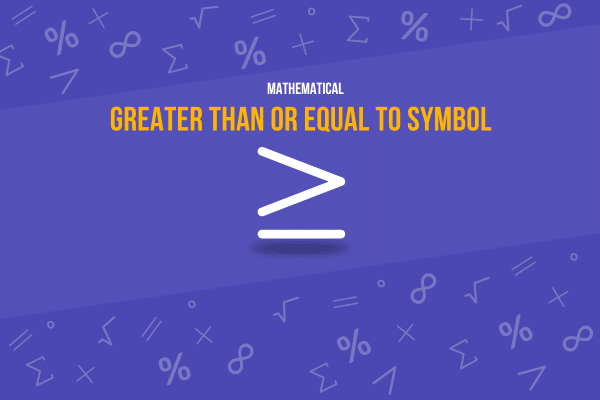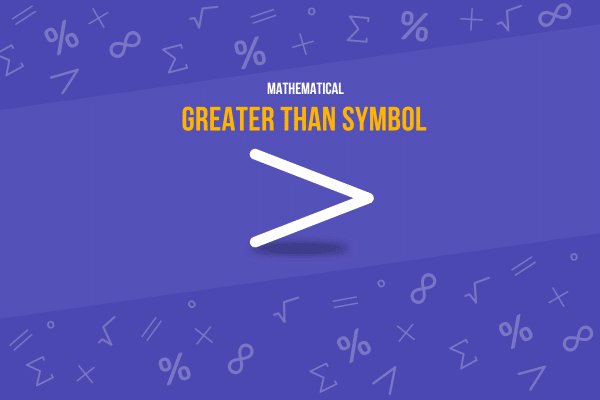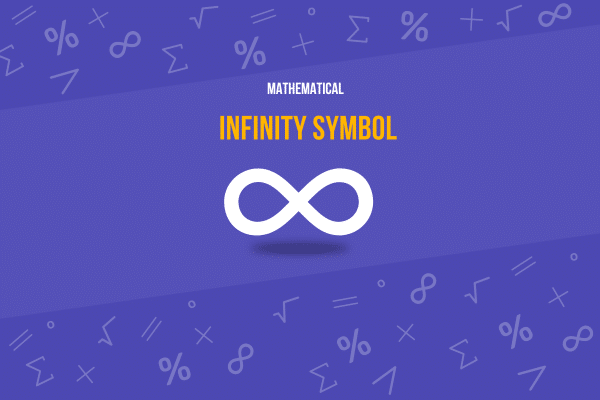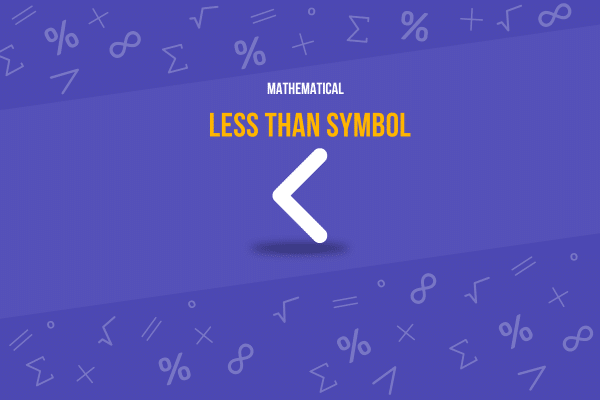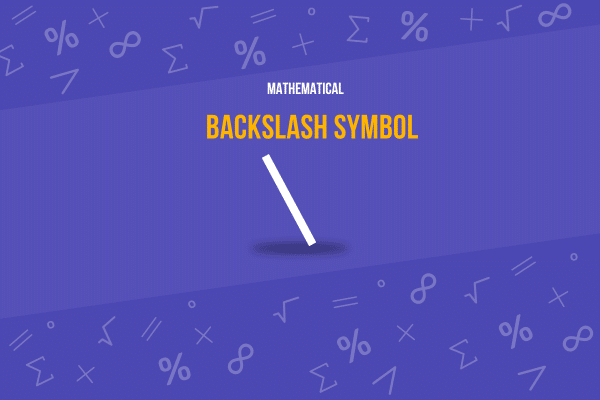What is the Plus-Minus Symbol?
You’ve encountered the plus-minus ± symbol numerous times in your math journey, but have you ever considered its whole meaning?
This little symbol, the plus-minus sign, carries a world of meaning. It’s more than a shorthand for “either this or that.”
Understanding this sign can untangle mathematics, physics, statistics, and other complexities.
Let’s get started!
Fast Facts
±
Plus-Minus Symbol
Here’s a detailed table providing information about the Plus-Minus symbol (±):
| Attribute | Detail |
|---|---|
| Symbol Name | Plus-Minus Sign |
| Unicode | U+00B1 |
| Image | ± |
| Brief Description | Used to indicate the presence of both an upper and lower tolerance limit, such as in measurements where precision is variable. |
| Unicode Version and Date of this Version | Unicode 1.1, released in June 1993 |
| Unicode Block Name | Latin-1 Supplement |
| Plane | Basic Multilingual Plane |
| Script | Common |
| Category | Symbol, Math |
| Bidirectional Class | European Number Separator (ES) |
| Combining Class | 0 |
| Character is Mirrored | No |
| HTML Entity | ± or ± or ± |
| CSS | \00B1 |
| UTF-8 Encoding | C2 B1 |
| UTF-16 Encoding | 00 B1 |
| UTF-32 Encoding | 00 00 00 B1 |
Here’s What You Will Find
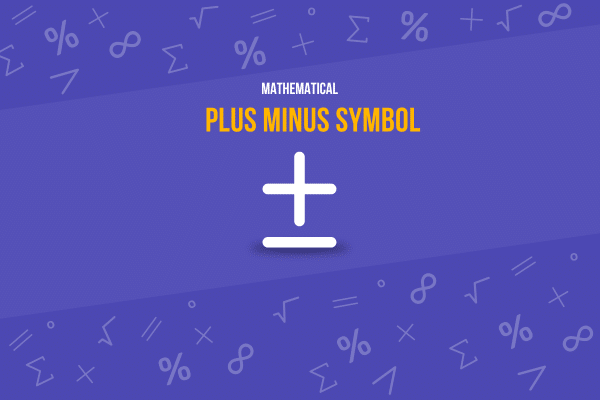
Plus-Minus Symbol
The plus-minus symbol (±) is a widely used mathematical symbol with various meanings. In its most basic form, it signifies the presence of both positive and negative solutions to a particular equation.
For example, if we write “x = ±4”, x could be either +4 or -4. The symbol also expresses ranges or errors in scientific and engineering contexts.
When used this way, it indicates the degree of precision or uncertainty associated with a measurement. For example, “50 ± 2” represents a value that could be as low as 48 or as high as 52.
It’s a versatile tool that greatly enhances the communicative power of mathematical and scientific notation.
Other Names
Apart from the popular name “plus-minus symbol,” this multifaceted symbol also goes by several other names. In some circles, it is referred to as the “plus or minus sign,” reinforcing the idea that it represents two possible values, one positive and one negative.
In other instances, it might be called the “bipolarity sign,” alluding to its dualistic nature. Also, in scientific and engineering settings, where it is often used to denote tolerance or error ranges, it may be called the “error sign” or “uncertainty sign.”
Regardless of its many names, the function remains the same: it denotes positive and negative possibilities or expresses a range of values in precise measurements.
Plus-Minus Symbol Meaning
The plus-minus sign (±) is a mathematical symbol used to represent the presence of both a positive and a negative variation in quantities. It indicates that a number may have two values, one obtained by adding and the other by subtracting a specific amount from a base value. Commonly used in expressions such as ( x = 5 ± 2 ), the symbol shows that ( x ) can be either 7 or 3. This symbol is particularly useful in scientific and engineering contexts where it is essential to convey tolerance, error margins, or measurement variations.
At its core, the plus-minus symbol (±) is a tool for expressing duality or variability. In mathematics, the symbol often indicates that an equation has positive and negative solutions.
For example, in the equation “x² = 9,” the solution is “x = ±3”, signifying that x could be either positive 3 or negative 3. This reflects one of the fundamental principles in algebra, which is that a square root has both positive and negative values.
The symbol has also been used to indicate a range of values in a statistical confidence interval, conveying the likely range within which a population parameter falls given a sample data set.
In this way, the plus-minus symbol is more than just a combination of the plus and minus signs; it is a powerful tool that allows us to express multiple possibilities and degrees of uncertainty in a compact, universally understood form.
Plus-Minus Symbol Unicode
Unicode is a standardized character encoding system developed to facilitate the consistent representation and handling of text expressed in most of the world’s writing systems.
This universal character set allows for the encoding, storage, and digital representation of various characters and symbols, enabling them to be used and recognized across various platforms and devices.
This has been especially critical in the global internet age, where information is shared across many languages and scripts.
As for the plus-minus symbol, its Unicode representation is U+00B1. So, when a device interprets this specific Unicode, it displays the ± symbol, ensuring a consistent representation of this mathematical sign across different systems.
Plus-Minus Symbol Uses
The plus-minus symbol (±) is a versatile mathematical symbol used in various fields to express various values or uncertainty. Here are some key uses of the plus-minus symbol:
- Error Measurement: Indicates possible error or uncertainty in scientific measurements, such as (100 ± 5), meaning the value could be as low as 95 or as high as 105.
- Tolerances in Engineering: Specifies tolerances in dimensions or other measurable parameters in engineering designs, showing permissible variations from the specified dimension.
- Statistics: In statistical results, it denotes confidence intervals or margins of error around a mean value, such as in survey results or experimental data.
- Quadratic Equations: Used in mathematics to provide both solutions of a quadratic equation, as in the formula (x = \frac{-b ± \sqrt{b^2 – 4ac}}{2a}).
- Physics and Chemistry: Represents variations in physical and chemical quantities, such as temperature, concentration, or pressure changes, reflecting both increase and decrease from a nominal value.
- Currency Exchange Rates: Used in financial contexts to indicate the expected fluctuation range of currency exchange rates.
- Medical Dosages: In medicine, a symbol might describe a range within which a dosage is considered safe or effective.
These applications highlight how the plus-minus symbol conveys dual possibilities or ranges of values, enhancing clarity and precision in mathematical, scientific, and technical communications.
The plus-minus symbol (±) serves multiple roles across different fields of study. Mathematics most frequently uses it to indicate positive and negative solutions to an equation. It’s also used in statistics to express confidence intervals.
Outside the sciences, you might encounter the plus-minus symbol in music notation, representing major-minor tonality.
Indeed, the ± symbol’s versatility is a testament to its fundamental value in conveying duality or range in various contexts.
Plus-Minus Symbol Examples
The plus-minus symbol (±) is widely utilized in various contexts to denote dual possibilities, especially in scientific, mathematical, and engineering disciplines. Here are some practical examples illustrating its use:
- Scientific Measurements: Often used to indicate the precision of measurements, such as stating that the gravitational constant is ( 9.81 ± 0.03 \text{ m/s}^2 ), which means it could vary slightly above or below 9.81.
- Engineering Tolerances: In engineering drawings, dimensions might be specified with tolerances; for example, a length might be given as ( 50 \text{ mm} ± 0.1 \text{ mm} ), indicating the acceptable range of variation.
- Statistical Data Presentation: In reporting survey results, it is common to see the plus-minus symbol indicating the margin of error, such as “50% ± 4%” approval rating.
- Solution to Equations: In mathematics, particularly when solving quadratic equations, the formula ( x = \frac{-b ± \sqrt{b^2 – 4ac}}{2a} ) uses the plus-minus symbol to provide both potential values for x.
- Physics Equations: Used in physics to express quantities that have inherent uncertainties, such as the position of a particle in quantum mechanics might be expressed as ( x = 100 \text{ nm} ± 5 \text{ nm} ).
- Chemistry Concentrations: Indicates concentration variations in a chemical solution, e.g., ( pH = 7.00 ± 0.05 ), showing the potential slight deviation in pH measurement.
- Medicine: The dosage of medication might be prescribed with a range, for example, ( 200 \text{ mg} ± 20 \text{ mg} ), depending on individual patient tolerance and response.
These examples demonstrate the importance of the plus-minus symbol in accurately conveying the range of variability or uncertainty associated with various scientific, technical, and statistical values.
Why is the Plus-Minus Symbol Important?
The plus-minus symbol (±) is crucial in understanding and communicating mathematical and scientific concepts. It concisely communicates the existence of positive and negative solutions to equations, enhancing our ability to describe the mathematical world.
When used to denote uncertainty or tolerance, it provides a simple yet powerful means to represent variability, precision, and reliability in measurements. This is particularly vital in scientific research, engineering, and quality control, where understanding these variations can have substantial practical implications.
The symbol also offers a way to express statistical confidence intervals, which form the backbone of statistical inference. By packing so much meaning into a single symbol, the plus-minus sign facilitates clear, precise, and efficient communication in mathematical and scientific contexts.
Without it, describing these concepts would become more cumbersome and less universally understood.
Plus-Minus Symbol History
The symbol was adopted to signify the dual solutions – both positive and negative – of certain mathematical equations.
Over time, its use expanded into other fields, including the sciences and engineering, to express tolerances or uncertainty.
The plus-minus symbol (±) has a significant historical background in mathematics and science, marking its influence in various fields due to its utility in expressing uncertainty and variation.
Origins
- Early Use: The origin of the plus-minus symbol is generally attributed to the 15th century. European mathematicians used it to simplify the presentation of errors and uncertainties in calculations and measurements.
- Mathematical Adoption: The symbol gained widespread acceptance in the 16th century when prominent mathematicians like Johannes Widmann adopted it. Widmann used it in his book Behende und hübsche Rechenung, published in 1489. This book marks one of the earliest uses of the plus and minus symbols, although their combined form (±) would appear slightly later.
Development
- Standardization: As mathematical notation evolved, the plus-minus symbol was standardized over the centuries and began to appear regularly in scientific literature. By the 19th century, it was commonly used in mathematical and scientific texts to denote equations involving errors or alternative solutions.
- Symbol Evolution: The symbol itself has not changed significantly since its inception but has expanded in application across different sciences.
Modern Usage
- Universal Notation: Today, the plus-minus symbol is a universal part of mathematical notation recognized worldwide. It is used in academic textbooks and professional fields such as engineering, physics, and finance.
- Digital Standardization: With the advent of computing, the plus-minus symbol was included in the ASCII extended character set, ensuring its easy accessibility on keyboards and digital devices. Including Unicode and other character sets has facilitated its use in digital communications and documentation.
Cultural Impact
- Educational Importance: The plus-minus symbol is taught in schools worldwide as part of basic arithmetic and algebra, highlighting its foundational role in mathematical education.
- Professional Significance: Its application in fields that require precision and clarity—like engineering and science—underscores its importance in professional and technical disciplines.
The history of the plus-minus symbol is a testament to its enduring utility in expressing dual possibilities or uncertainties. It enables clearer communication in mathematical expressions and scientific data across cultures and centuries.
Today, the plus-minus symbol is integral to mathematical and scientific notation, recognized and understood globally thanks to standardization efforts such as the Unicode system. Its enduring presence underscores its utility and the fundamental principles it represents in our understanding of the numerical world.
Plus-Minus Symbol Origin
The plus-minus symbol (±) has origins that can be traced back several centuries. It first appeared in print in the “Artis Analyticae Praxis ad Aequationes Algebraicas Resolvendas” by the British mathematician Thomas Harriot in 1631, nearly 400 years ago. However, it’s worth noting that Harriot’s book was published posthumously, and the symbol may have been in use earlier in his unpublished works.
Evolution of the Plus-Minus Symbol
The plus-minus symbol (±) has remained visually consistent since its first printed use in the 17th century. Its physical representation as a combination of the plus (+) and minus (-) signs has stayed constant.
However, the contexts in which it is used and its meanings have expanded. Introduced initially to represent the dual solutions of mathematical equations, its use was later extended to fields such as physics, engineering, and statistics to denote the range or uncertainty of a value.
This additional use signifies an essential concept in these fields, where understanding and accounting for variability is key.
Furthermore, its inclusion in standardized character sets like Unicode has facilitated its digital representation, allowing it to be consistently displayed across various electronic platforms and devices worldwide.
Thus, while the symbol hasn’t changed significantly, its application and influence have broadened considerably.
Plus-Minus Symbol In Everyday Life
Reflecting on the plus-minus symbol (±), it’s fascinating to recognize how this simple mathematical tool captures the essence of duality and variability, principles that are so inherent to our everyday lives.
We encounter countless situations each day where we must consider positive and negative outcomes, much like the dual solutions the symbol represents. We could incorporate this idea into our daily decision-making processes, appreciating that there are often multiple possible outcomes and that a well-rounded perspective involves considering both ends of the spectrum.
Similarly, just as the symbol denotes variability and uncertainty in scientific measurements, we could apply this concept to embrace and plan for the variability in our day-to-day tasks.
By acknowledging that there’s a “range” in how things might unfold – our commute times, project deadlines, or even the outcomes of our interactions – we can develop more adaptable plans and realistic expectations.
Ultimately, the principles embodied by the plus-minus symbol can remind us of the complexity and variability of life, encouraging us to embrace a more flexible, nuanced mindset.
Last Thoughts
In conclusion, the plus-minus symbol (±) is significant in mathematics, science, and beyond. Its ability to convey duality, variability, and uncertainty has made it an indispensable tool for mathematicians, scientists, and engineers worldwide.
Whether expressing the dual solutions of equations, denoting ranges or measurement errors, or representing confidence intervals in statistics, this symbol plays a vital role in clear and concise communication.
If you find the plus-minus symbol intriguing, you’ll be delighted to explore other fascinating symbols and signs that enrich our understanding of the world.
For those who want to showcase their love for mathematics and science, don’t forget to check out merchandise featuring the iconic plus-minus symbol. You can proudly display your passion for knowledge and discovery.
Before You Go
If you found this post informative and interesting, don’t hesitate to share it with your friends, colleagues, or anyone who might appreciate the insights into the fascinating world of mathematical symbols!
Sharing helps spread knowledge and invites further discussion and exploration, enriching understanding for everyone involved.
So, go ahead and click that share button—let’s get more people engaged in the intriguing details of symbols we use every day!

